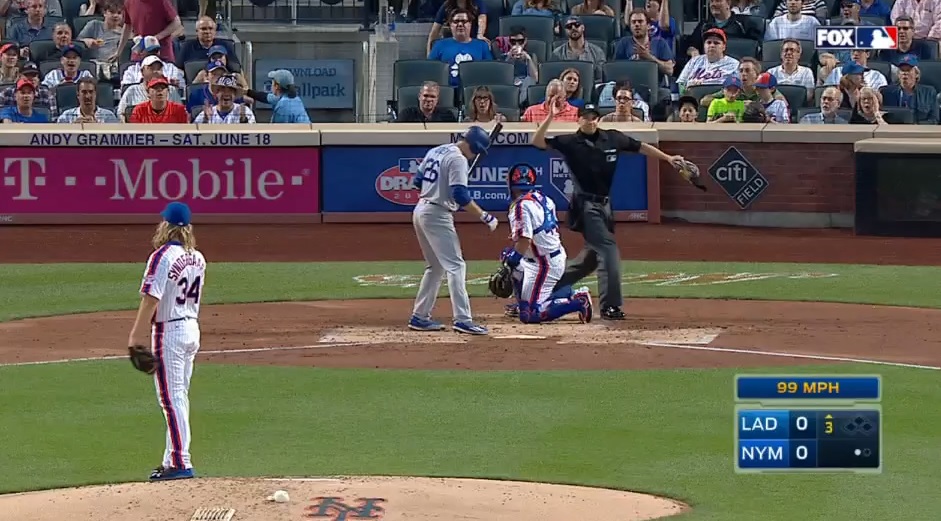
And we’re back to discussions about timing.
Two weeks ago, talk concerned the Rangers’ extended wait to retaliate against Jose Bautista. Saturday, it was Mets starter Noah Syndergaard.
Much of the conversation had to do with whether Syndergaard deserved to be ejected for throwing a pitch behind Chase Utley. The pitch, a fastball, flew so wide that Utley didn’t even flinch to try to avoid it. It was almost certainly a response to Utley’s devastating takeout of Ruben Tejada during last season’s playoffs. Also, it was entirely harmless, though plate ump Adam Hamari—who had clearly been prepped on preceding events—failed to see it that way.
Other parts of the conversation had to do with Utley’s handling of things. After finishing the at-bat against reliever Logan Verrett by striking out, he offered the best response possible—he homered twice, including a grand slam, in what became a 9-1 victory at Citi Field.
Which brings us back to timing. Saturday was the fifth meeting between the teams this year, and the eighth overall (counting the postseason) since Utley broke Tejada’s leg. This leaves us with an overarching question: why now?
Utley was omitted from the lineup for Game 3 of the NLDS, the one following the mishap, and New York pitchers opted against taking their frustrations out on other Dodgers. He pinch-hit in the deciding Game 5, but that was a one-run playoff game, which trumped any thoughts of retaliation.
This year’s meetings looked like this:
- May 9: Utley gets two at-bats, both with the Mets trying to protect a 4-2 lead.
- May 10: Every one of Utley’s four at-bats comes with the game tied.
- May 11: Utley comes up four times, with the game tied or New York leading by no more than two runs.
- May 12: Utley bats in the first inning with the game tied; in the second inning with the Dodgers leading, 4-0 (and hits a solo homer); and in the fifth and seventh innings with the Dodgers leading 5-0.
- May 27: All of Utley’s at-bats come with the Mets holding no more than a three-run lead, until the eighth, when he hits in a 5-1 game (and strikes out).
- May 28: Syndergaard drills him.
So what happened? If the Mets were inclined to retaliate, the obvious situations would have been on May 12 and one at-bat on May 27. There’s little chance that Terry Collins would order such a thing from on high (he’s already gone on the record against perpetuation of grudge matches), so deductive reasoning says that the pitchers Utley faced—Bartolo Colon and Sean Gilmartin in the former game, Jerry Blevins in the latter—simply had no stomach for this type of confrontation.
Deductive reasoning also says that Syndergaard probably did.
Still, there’s no getting around the duration between Utley’s perceived offense and Syndergaard’s response. The pitcher himself probably acknowledged as much with his weapon of choice—a non-contact fastball so far off its mark that Utley would have had a tough time throwing himself into it to earn an HBP.
In other words: perfect. Message sent, no harm done.
Except that Hamari refused to play along. Usually, we’re stuck with clueless umpires whose lack of boning up on prior history between teams leads to some tense moments. This was the opposite of that. Had Hamari taken even a moment to consider the events as they happened, he would have leveled a warning and both sides would have likely considered things even.
Chalk this one up as a win for the Dodgers, both literally and figuratively.
You will never beat Utley at this game. If that pitch was a little closer Utley would likely have stepped (back) into it and taken his base like a man. His interview shows it, he doesn’t care and is focused on that fact that they won.
No doubt about it — the man is hard-nosed … which helped lead to this situation in the first place.